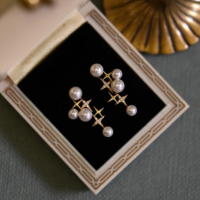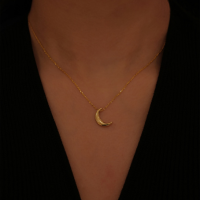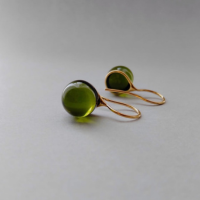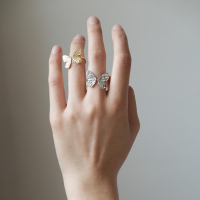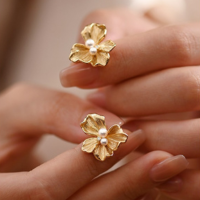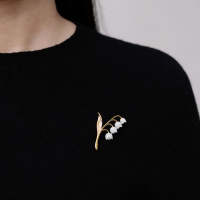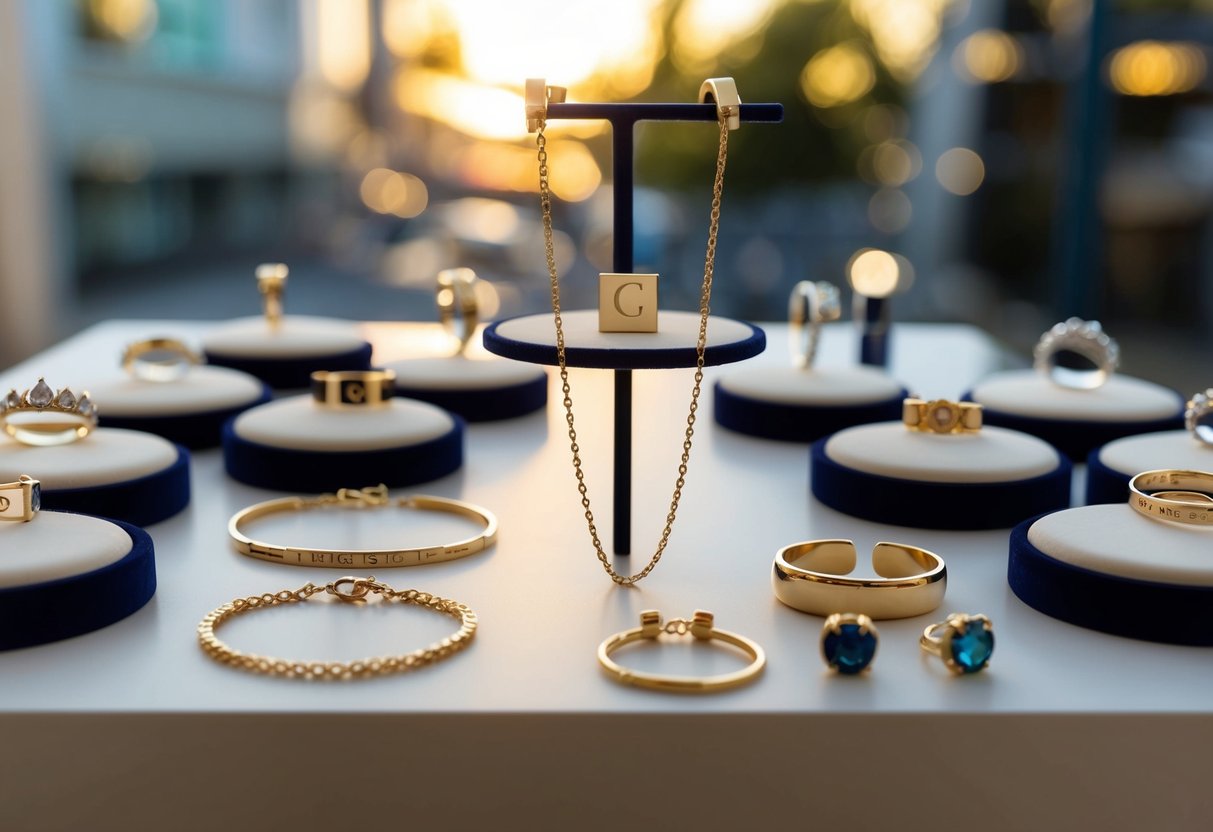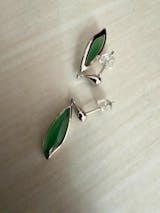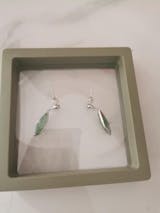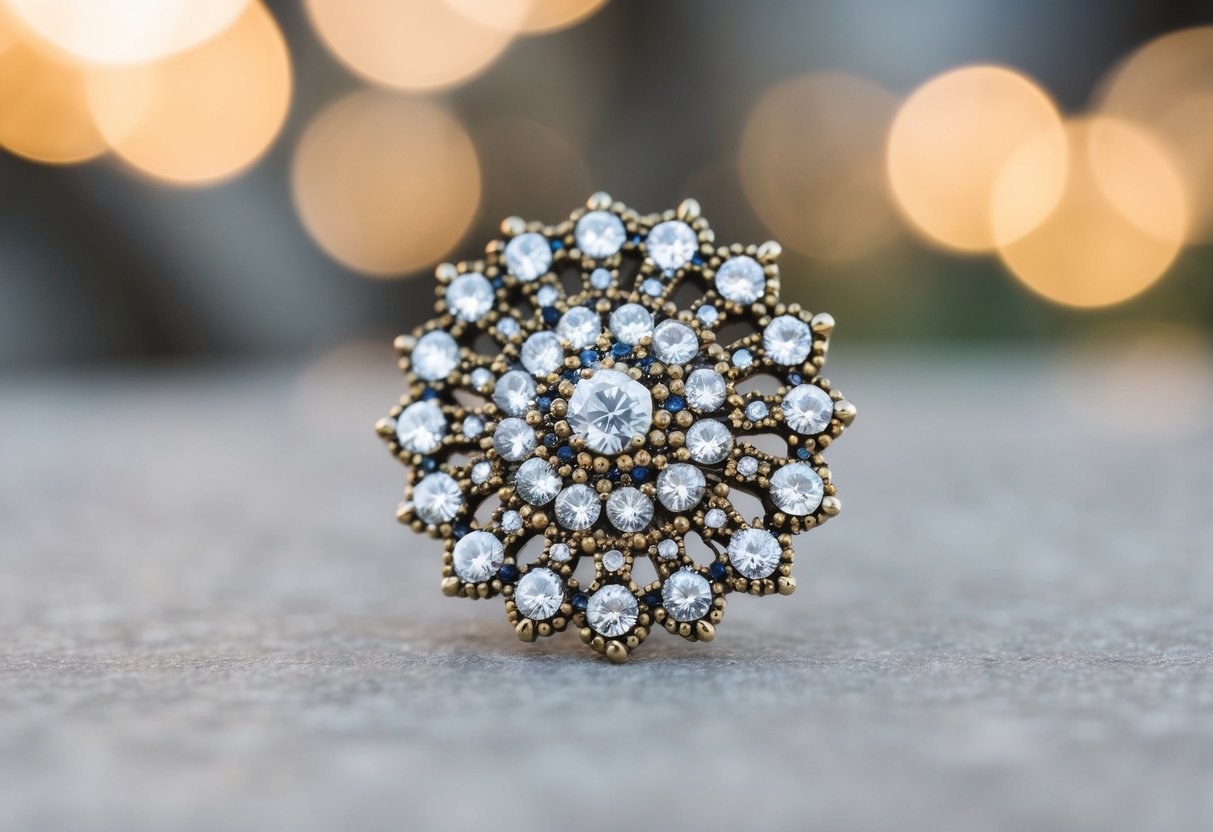
How to Spot a High-Quality Brooch: Key Features to Look For
Check out our personalized jewelry collections! (kids drawing jewelry, coin jewelry, wire jewelry, fingerprint jewelry, handwriting jewelry, and more)
Brooches have a captivating allure, tying together attire with style and elegance. When we explore the qualities of a high-quality brooch, several key features set an exceptional piece apart from the ordinary. Understanding these characteristics not only enhances our appreciation but also ensures that we invest wisely.
Craftsmanship is a pivotal factor that marks the difference between a casual accessory and a timeless treasure. The intricacy of the design, the precision in the assembly, and the overall finish speak volumes about its quality. A discerning eye for detail allows us to identify genuine craftsmanship, which often leads to better longevity and wearability.
Each brooch tells a story through its design and embellishments. Noticing the materials used, such as the type of metals, gemstones, and their settings, reveals much about the brooch's elegance and worth. By examining these aspects and any hallmarks or branding, we gain insight into its authenticity and potential collectability.
Key Takeaways
- Quality craftsmanship distinguishes exceptional brooches.
- Design and materials reveal elegance and worth.
- Authenticity is seen in hallmarks and brand marks.
The Craftsmanship of Brooches
Understanding the craftsmanship involved in brooches helps us identify pieces of exceptional quality. From the selection of materials to the precision of metalwork and the exquisite detailing, each component plays an essential role.
Materials Used in High-Quality Brooches
A high-quality brooch often features precious metals such as gold, silver, or platinum. These materials not only provide durability but also add an undeniable elegance. We may also see semi-precious and precious stones, like sapphires or diamonds, enhancing the brooch's allure.
Enamel work in brooches can indicate a skilled artisan's touch. The vibrant yet durable enamel colors offer a striking element. Additionally, quality brooches might include natural pearls or rare gemstones, ensuring both rarity and beauty.
Precision of the Metalwork
Immaculate metalwork is paramount in crafting exceptional brooches. Each line and curve in the design should flow seamlessly, reflecting precision. The connection points, such as clasps and hinges, must function flawlessly, providing security without compromising the design.
We find that symmetrical designs often indicate a high level of skill, as artisans take great care to ensure that all elements align perfectly. The smoothness of the metal with no sharp or uneven edges highlights the artisan's dedication and attention to detail.
Exquisite Detailing and Finish
The detailing on high-quality brooches is what truly sets them apart. Intricate engravings or embossing can add depth and character. Carefully set stones, with each one placed in a secure setting, demonstrate the jeweler's expertise.
A polished finish, whether matte or glossy, enhances visual appeal, and ensures longevity. Sometimes, we notice subtle design elements like intricate filigree, or millgrain edging, that provide sophistication. These finishing touches, born from experience and skill, contribute to the brooch's timeless charm.
Design and Aesthetics
When assessing the design and aesthetics of a high-quality brooch, there are several key aspects to pay attention to, including historical influences, creative gemstone arrangements, and the overall harmony of the piece.
Signature Styles and Eras
High-quality brooches often reflect distinct styles from specific historical eras. Art Nouveau brooches, for instance, are recognizable by their flowing lines and natural motifs. Victorian pieces may feature intricate engraving and symbolism. Understanding these signature styles helps us appreciate the craftsmanship and art behind each period's distinct aesthetic.
We should look at the hallmark signs, like the detailed enamel work from the Art Deco period or the bold, geometric forms popular in the mid-20th century. Each era brings its flair, influencing the brooch's design and contributing to its unique beauty.
Innovative Use of Gemstones
The use of gemstones can significantly elevate the visual appeal of a brooch. Many high-quality pieces feature creative patterns where gemstones are arranged to complement one another. For instance, arranging sapphires and diamonds together can create a striking contrast that catches the eye.
Attention to detail is crucial here. We should assess the cut, clarity, and placement of each stone, considering not only their aesthetic placement but their symbolic meanings, enhancing the brooch's narrative.
Designers often experiment with various gemstone cuts and settings. This innovation can make a brooch not only visually stunning but also reflective of personal or culturally significant themes, making it a captivating centerpiece for any outfit.
Harmony and Balance in Composition
Achieving balance in a brooch’s design requires skill and artistic vision. Each element, whether a gemstone, metalwork detail, or enamel finish, must align harmoniously. The symmetry or intentional asymmetry plays a crucial role, guiding our eye smoothly across the piece.
It's essential for us to note how different materials and shapes come together, whether they form a symmetrical pattern or an equally intriguing asymmetrical design. This harmony gives the brooch its character and makes it a distinguished example of fine jewelry craftsmanship.
Ultimately, the ability to harmoniously blend various elements signifies a level of expertise and artistry, indicating the quality and care invested in the brooch's creation.
Gemstones and Embellishments
In evaluating brooches, the excellence of gemstones and added embellishments plays a pivotal role. Our focus should be on genuine gemstones, skillful setting techniques, and the artistry of enameling and inlay.
Authenticity of Gemstones
We must pay close attention to the authenticity of the gemstones in a brooch. Genuine gemstones often have subtle imperfections that signify their natural origin. Look for a certificate of authenticity or consult with a qualified appraiser to confirm authenticity. Tips for identifying genuine gemstones:
- Check for uniform color and clarity.
- Inspect facets for precision and symmetry.
- Use a jewelers' loupe to spot inclusions.
Various gemstone alternatives or enhancements can also exist, so caution is essential. Synthetic or treated stones are sometimes misleadingly passed off as natural. A reputable jeweler should offer transparency about any enhancements.
Setting Quality and Techniques
The setting of a gemstone can greatly affect both the durability and aesthetics of a brooch. Excellent craftsmanship involves securely holding the stone while allowing its brilliance to shine. Common setting styles include prong, bezel, and channel settings.
- Prong setting: Offers maximal light exposure but requires robust craftsmanship.
- Bezel setting: Encircles the stone, providing substantial security.
- Channel setting: Integrates gemstones into the metal, ideal for durability.
Examining the setting under magnification can reveal the quality of work. Prongs should sit evenly and tightly around the stone, while a bezel should smoothly encircle it without gaps. These details enhance a brooch’s longevity and beauty.
Enamel and Inlay Work
A brooch's enamel and inlays offer a canvas for both creativity and skill. Enameling involves fusing powdered glass to metal, creating vibrant, long-lasting colors. Types of enamel work to consider:
- Cloisonné: Uses wire compartments to contain enamel.
- Champlevé: Enamel is applied into recesses of the brooch.
- Plique-à-jour: Translucent enamel without metal backing.
Inlay work, particularly with wood, mother-of-pearl, or semi-precious stones, requires precision. High-quality inlays should sit flush with surrounding metal and exhibit meticulous detailing. This craftsmanship adds a unique touch that speaks to the brooch's artistry and value.
Brand and Hallmarks
Understanding the brand and hallmarks of a brooch can greatly influence its value and authenticity. Recognizing designer marks and understanding the significance of hallmarks and stamps are essential when evaluating these pieces.
Recognition of Designer Marks
Identifying designer marks is crucial for determining the origin and value of a brooch. These marks, often discreetly placed, can include signatures, initials, or logos. Famous brands often have recognizable symbols that make their pieces distinctive.
We should pay close attention to the style and placement of these marks, as they can vary between brands and designers. It’s also important to research these marks through reputable sources or guides to ensure authenticity. Counterfeits may attempt to replicate these, but with slight inaccuracies.
It’s also worthwhile to note that different eras introduced specific marking trends. By familiarizing ourselves with these trends, we can better assess the age and origin of a brooch. This knowledge not only enhances our collection but also ensures we’re investing in genuine pieces.
Understanding Hallmarks and Stamps
Hallmarks and stamps provide insight into the material and quality of a brooch. Typically found on the reverse side, these engravings indicate the metal content, manufacturer, or country of origin. We must look for standard marks, such as those denoting gold purity like "14K" or "18K" for gold content.
These symbols are vital for understanding the authenticity and value of the piece. Stamps may also include patent numbers or specific codes linked to certain time periods or regions.
It's beneficial to familiarize ourselves with the variations in these marks internationally. For instance, British pieces often have hallmarks higher in detail due to strict regulations. Having a good grasp of these can prevent purchasing pieces that might not meet our quality standards or expectations.
Wear and Tear Considerations
When examining a brooch, it's crucial to focus on potential wear-related issues. We should pay attention to the strength of the hinge and clasp, as well as signs of metal fatigue. These factors impact the durability and longevity of a brooch.
Assessing Hinge and Clasp Strength
A brooch's hinge and clasp are its most used components, so their durability is essential. We should start by checking that the hinge moves smoothly without any wobbling. Any looseness can lead to the brooch opening unintentionally or closing improperly.
The clasp, especially, should securely hold under slight pressure. A small snap when closing indicates good tension. Make sure there's no rust or discoloration, suggesting exposure to moisture, which may weaken these components over time.
Inspect for any repairs or modifications that stand out, as these can alter the original mechanism. A well-maintained hinge and clasp ensure the brooch stays in place, retaining its aesthetic appeal.
Evaluating Metal Fatigue
Metal fatigue can affect both the appearance and structural integrity of a brooch. We should inspect the metal for any visible cracks, tarnish, or discoloration, especially near the edges and joints. These areas experience the most stress and are prone to wear.
Consider if the brooch is made from gold, silver, or alloys; these materials handle wear differently. For instance, gold is more malleable and could show more scratches. Spotting these signs early can prevent further deterioration.
Metal fatigue doesn’t just affect the look; it also affects the durability. Therefore, understanding the material's properties helps us anticipate and manage wear effectively.
Value and Collectability
When evaluating brooches, understanding their market demand and historical significance can dramatically influence their value and appeal to collectors. Recognizing these elements helps us make informed decisions about potential acquisitions.
Assessing Market Demand
Market demand plays a crucial role in a brooch's value. We should observe current trends in the jewelry market by consulting auction results, trade publications, and fashion reports. Popular styles and materials can significantly impact prices.
Engagement with collector communities reveals prevalent preferences. Online forums, social media groups, or jewelry fairs might indicate rising interest in particular designs or eras. Limited editions or pieces from renowned designers often command higher prices, attracting both collectors and investors alike.
Condition is another determinant. A well-preserved piece typically garners more interest and higher prices than one requiring restoration.
Provenance and Historical Significance
Provenance adds significant layers to a brooch's value. Documented histories detailing ownership, origin, and designer can elevate a piece's desirability. For example, brooches from royal collections or iconic individuals substantially edge over those lacking historical narratives.
Historical significance is key. We should verify if a brooch witnessed significant historical events or belonged to a notable period. Victorian or Art Deco brooches, often sought by collectors, reflect unique craftsmanship of their time.
Awareness of these factors not only informs potential investments but also enriches our appreciation for each brooch's legacy and craftsmanship.
Frequently Asked Questions
When evaluating a high-quality brooch, we focus on identifying marks, craftsmanship, and materials. Staying informed about design elements and authenticity is crucial.
What identifying marks should you look for on a high-quality brooch?
First, let's check for hallmarks and signatures. These are often small engravings indicating the maker. Designer brooches could feature logos or brand names.
How can the craftsmanship of a brooch indicate its quality?
Attention to detail and precise workmanship are critical. We look for smooth finishes and tightly set stones. Seamless soldering and small, polished parts reflect expert craftsmanship. Imperfections can be a sign that the brooch is not of the highest quality.
What materials and gemstones are commonly used in luxury brooches?
Commonly, we'll find gold, platinum, and high-quality silver. Gemstones like diamonds, sapphires, and emeralds are often set in luxury pieces. Natural materials such as mother-of-pearl and coral can also be present, adding unique value.
What types of clasps are associated with fine brooches?
Secure clasps are a hallmark of high-end brooches. We see C-clasps, trombone clasps, and safety catches in many finely crafted pieces. These types of clasps are both functional and designed to maintain the brooch's integrity over time.
How do the design elements of a brooch affect its value and quality?
Design is a key factor. We look for timeless appeal, artistic elements, and innovation. Symmetry, proportion, and the use of color can greatly impact a brooch's desirability. Unique designs often hold their value well, especially if they're associated with renowned designers.
What are the indicators of authenticity in designer brooches, such as Chanel?
Authenticity indicators include signature stamps and documentation. Chanel brooches, for instance, might have serial numbers or certificates. We also consider sourcing from reputable dealers who provide provenance. These elements help ensure we're getting an authentic piece.

